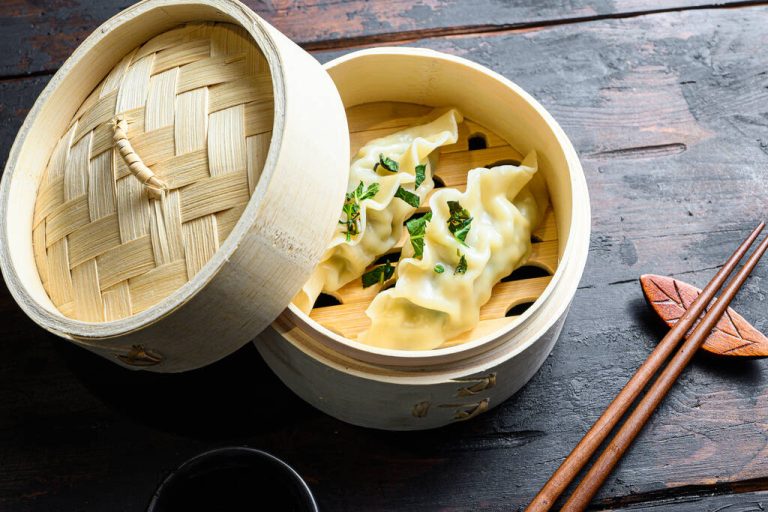Health, culinary delights and sustainability can be reconciled particularly well with steaming. In this article we will show you exactly what that means.
Steaming is a very gentle technique for preparing foods such as vegetables, mushrooms, fish and meat. The difference to other methods is that the food is in direct contact with a small amount of liquid and the resulting water vapor.
With steam cooking, for example, the food to be cooked is above the liquid and is only cooked by the rising steam. When cooking, on the other hand, the food is completely under water.
The art of steaming and its benefits

Steaming has two advantages:
Firstly, valuable vitamins and minerals, as well as taste and color are better preserved. This is because they are not washed away by the cooking water or destroyed by excessive temperatures.
Secondly, steaming is relatively resource-efficient because you need little or no water, work under low to medium heat and the food can be ready after 3 to 15 minutes.
Basically, steaming has no disadvantages. With this method, it is just not possible for you to create roasted aromas from a taste point of view.
So that you can take advantage of all the advantages of this gentle method, it makes sense that you consume the liquid or use it as a basis for sauces. This is because dissolved nutrients and flavorings are also found in this at the end of the cooking process.
The three variants of steaming
Steam without adding liquid
The food to be cooked generates the liquid and the steam through its own juice. Accordingly, you need foods with a particularly high liquid content such as mushrooms, zucchini or frozen vegetables. A lid that closes well is particularly important here so that the water vapor cannot escape.
Steaming with addition of liquid
For foods with a lower liquid content, you should add some liquid so that your dish does not start to fry or even burn during the actual steaming process. This is especially true for root vegetables like potatoes, carrots and celeriac. You should also add some water to apples, broccoli or corn. In addition to water as a liquid, you can also use vegetable broth, wine, fruit juice or organic or plant-based milk. This will add extra flavor to your food.
Steaming with the addition of fat
Adding fat is another way to refine your food. The fat serves on the one hand as a flavor carrier and on the other hand as a carrier for fat-soluble vitamins. For example, you can use olive oil, organic butter, or vegan margarine. In the case of foods with a lower liquid content, you should make sure to add two to three tablespoons of liquid.
When steaming, you use relatively low temperatures and a lid so that the liquid cannot escape and there is a high level of moisture in the pot. You should also not use too much fat, so that in principle there is more liquid than fat. Overall, it will not be possible for your ingredients to start frying.
This is how you succeed in steaming particularly well

With the following rules of thumb, steaming will be particularly easy for you.
Use a rather wide and shallow pot.
Clean the food in advance and cut it into equal pieces. The smaller you cut your ingredients, the faster they’ll be done.
Do not lift the lid during the cooking time and shake the pot if necessary to mix the contents.
Don’t use extra water for frozen vegetables and don’t thaw them beforehand.
For harder foods, fill the pot with about an inch of liquid. These include vegetables such as carrots, potatoes, kohlrabi, broccoli and pumpkin. For softer foods, one to three tablespoons of water is enough. These include, for example, apples, spinach, kale or tomatoes.
Season your food with dried herbs before steaming. This way you can add more flavor and other health-promoting substances to your meal.
At the end of the cooking time, taste whether the contents are really done. Otherwise, let it simmer for a few more minutes.



